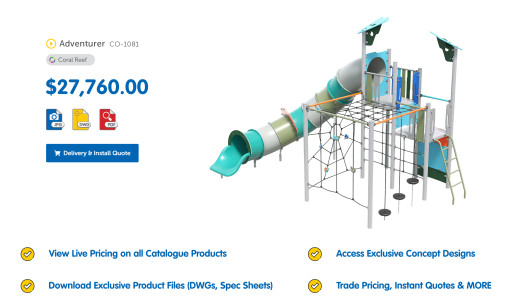Everything You Need To Know About Designing Inclusive Play Areas
Inclusive playground design gives children of all abilities the chance to play, grow and connect. A well-designed play area provides equal opportunities for movement, discovery and friendship. For councils, schools and community groups, inclusive design is an investment in the wellbeing of children and the strength of the community.
This guide brings together Moduplay’s experience, innovative products and philosophies such as Invisi-Clusive Play™. It also includes practical advice and real project examples so you can plan your own inclusive playground with confidence.
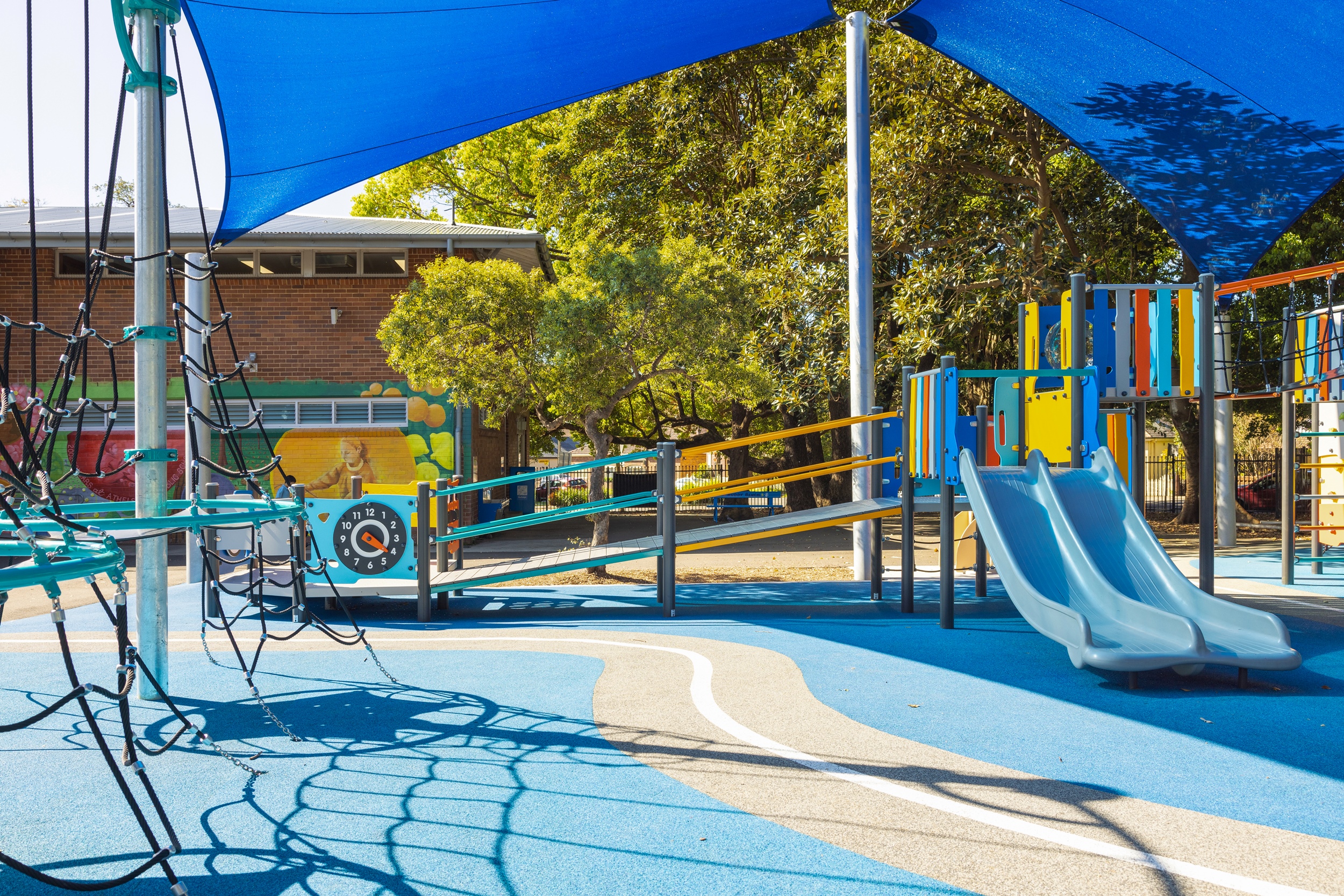
Share post
Why Inclusive Play Matters
Children learn through play. It develops physical skills, builds problem-solving ability, fosters social connection and boosts emotional resilience. When playgrounds exclude children with disabilities, they miss out on these vital opportunities. Inclusive playground design corrects this by opening play to everyone.
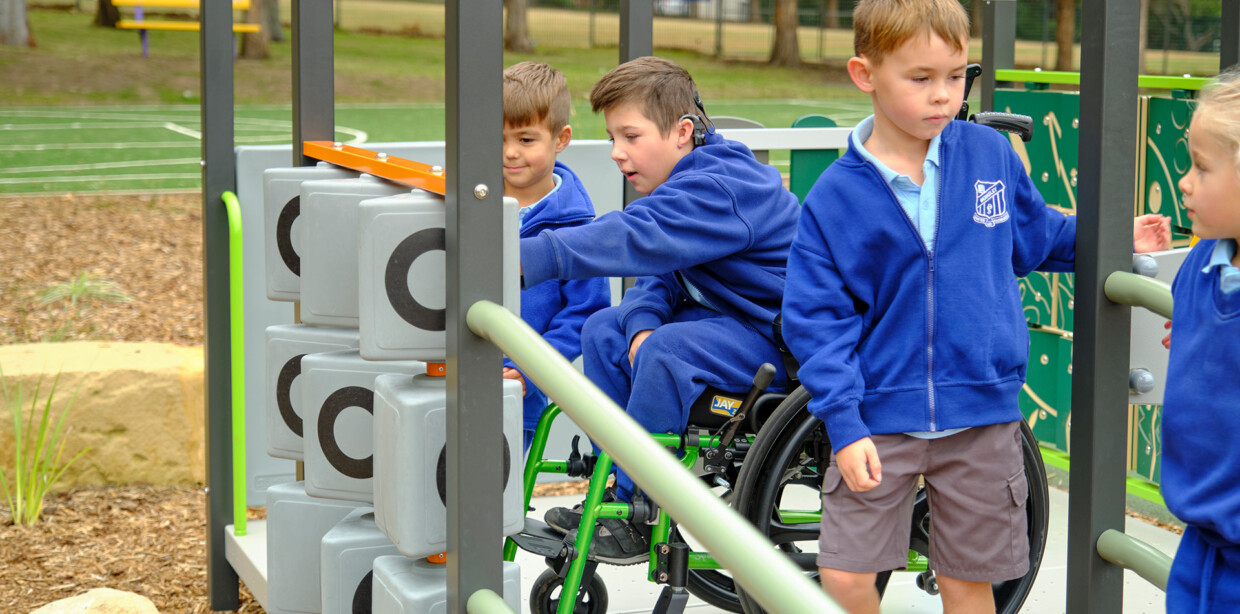
Social Benefits
Inclusive playgrounds encourage children to play together regardless of ability. A child in a wheelchair can spin with friends on an all-access carousel. A child with sensory processing challenges can find comfort in quiet play spaces before joining active games. These interactions teach empathy, cooperation and understanding.
Cognitive Benefits
Play teaches children to solve problems, make decisions and think creatively. Sand and water play encourages experimentation. Musical panels introduce cause and effect. Obstacle courses sharpen planning skills. Inclusive playground ideas ensure these experiences are open to every child.
Emotional Benefits
Playgrounds can feel overwhelming for children with anxiety or sensory sensitivities. Inclusive design addresses this with quiet zones, predictable pathways and supportive features. When children feel safe, they gain confidence and independence..
Physical Benefits
Playgrounds develop strength, coordination and balance. Children climb, swing, spin and run. For children with disabilities, inclusive design means equipment they can access and use effectively. Smooth surfacing, ramps and transfer points make active play achievable.
Communities that prioritise inclusive playgrounds show they value equal opportunity. They create places where children can thrive together, and families can gather without barriers. That is why inclusive playground equipment is a core part of Moduplay’s work.
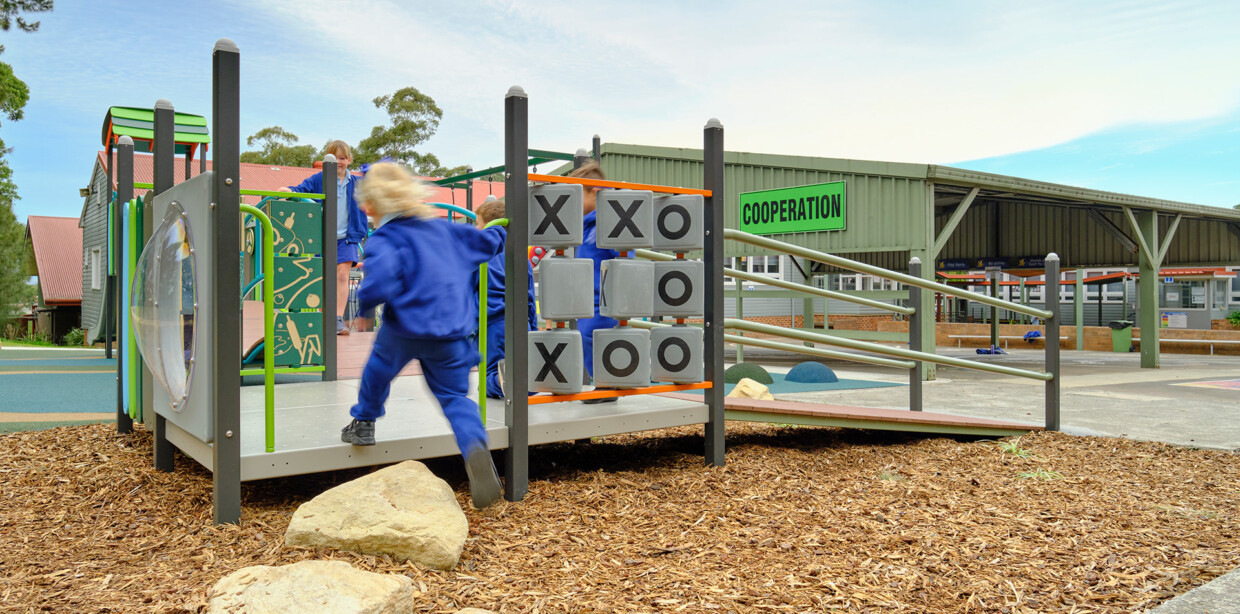
Core Principles of Inclusive Playground Design
Designing inclusive play areas requires careful planning. The following principles guide successful projects.
Universal Design
The Seven Principles of Universal Design ensure products and spaces are usable by as many people as possible. In playgrounds, this means pathways with gentle gradients, wide entries, transfer stations, seating for carers and equipment that provides multiple play options.
Play Variety and Challenge Levels
Children have different needs depending on age, ability and personality. An inclusive playground offers climbing, sliding, imaginative play, cooperative activities and solitary options. Providing different challenge levels helps children build skills gradually and keeps play interesting.
Accessibility and Navigation
An inclusive playground should feel easy to move through. Children and carers need smooth surfaces for wheelchairs and prams, ramps to elevated areas, and clear sightlines for supervision. A connected layout prevents dead ends and ensures every feature is usable. Units also need enough room for parents or carers to enter and assist. This matters at points like the tops of slides, where a child may become anxious or unsettled and require support.
Sensory Integration
Play should engage the senses. Tactile textures, bright colours, sound-based play and moving elements all contribute. Vestibular activities such as spinning or rocking help with balance and coordination. These experiences matter for all children but are especially important for those with developmental needs. Moduplay supports this with sensory and sound play equipment.
Safety and Comfort
Families need spaces to rest and recharge. Shade, seating, water stations and quiet corners all matter. Materials must withstand harsh conditions while staying safe for children. Durability ensures the playground continues to serve its purpose for years.
Together, these principles create an accessible playground design that welcomes everyone.
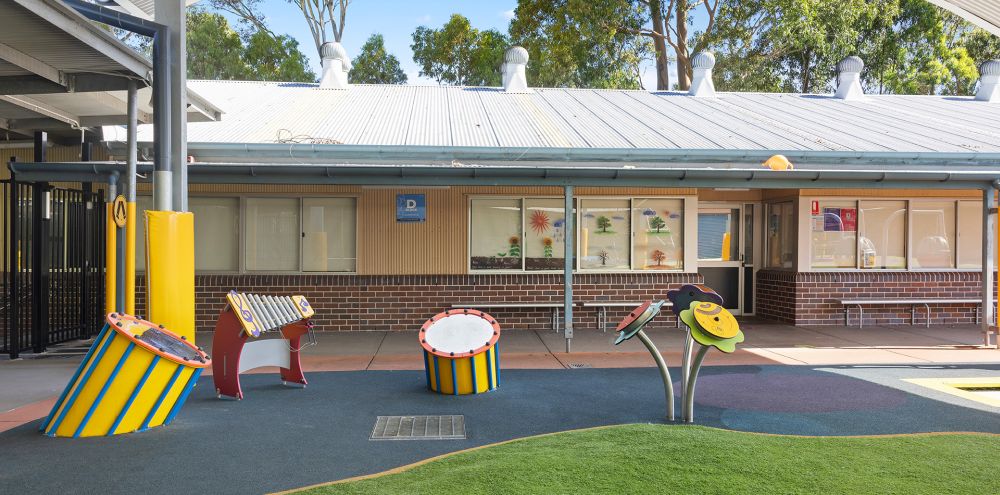
Moduplay’s Invisi-Clusive Play™ Philosophy
Inclusion should feel natural. When features look separate or specialised, they can unintentionally highlight differences. Moduplay’s Invisi-Clusive Play™ philosophy solves this by integrating inclusive elements seamlessly.
A carousel that excites every child also accommodates wheelchairs. A sand and water station at multiple heights allows group play across abilities. Surfacing that looks attractive also supports mobility devices.
This approach covers equipment, pathways, seating and site layout. It aligns with frameworks like Everyone Can Play, which encourage councils to think beyond minimum compliance.
Five Practical Ways to Bring Inclusive Play into Your Design
Inclusive playground ideas become reality when they are put into practice. These strategies make the process easier.
- Provide accessible entry and movement
Wide entrances, firm surfacing and ramps give every child access. Clear pathways ensure families can move throughout the site. - Incorporate sensory-rich features
Music panels, textured paths, sand pits and water channels stimulate multiple senses. These features keep children engaged and support different learning styles. - Offer diverse equipment
Climbers, swings, slides, carousels and rockers all add value. Products like the All-Access Luna Carousel and Safari Rocker bring children together across abilities. - Engage the community
Parents, carers, disability advocates and teachers provide insights that improve playground design. Their feedback ensures the playground reflects real needs. - Include rest areas and social spaces
Shade, benches and quiet corners are essential. Families need breaks, and some children need a calming spot before rejoining active play.
Innovative Products and Features from Moduplay
Moduplay has developed inclusive equipment that goes beyond expectations.
Inclusive Sand and Water Play
The inclusive sand and water range is an Australian first. Children can explore water channels and sand trays at different heights, allowing both wheelchair users and standing children to play together.
All-Access Luna Carousel and Safari Rocker
These products make movement exciting. The Luna Carousel allows wheelchairs to join the fun, while the Safari Rocker gives groups the chance to move in sync. Both encourage cooperation.
Integrated Systems
Inclusive features link easily with other Moduplay ranges. Sand and water play can connect with climbing structures, sensory equipment and ground-level activities. This creates a complete play space rather than isolated pieces.
Real-World Examples and Case Studies
Moduplay has delivered inclusive playgrounds for schools and communities across Australia.
At Berkeley Public School, the playground includes accessible surfacing, sensory panels and equipment that brings children together. Teachers report increased cooperation and confidence among students.
At Ashbury Public School, inclusive upgrades transformed outdoor play. The playground now supports active movement, imaginative play and accessible group activities.
Beyond schools, Moduplay partners with councils and developers to provide inclusive play in parks, reserves and community centres. These projects show that inclusive playground design works at any scale, from small schoolyards to large public spaces.
How to Plan an Inclusive Playground
Good planning makes inclusive playgrounds successful.
Stakeholder Involvement
Involve parents, carers, teachers and disability advocates early. Their experience highlights needs that might otherwise be overlooked. Children themselves can also provide useful feedback during planning.
Lifecycle Planning
Durability matters. Equipment should last through heavy use and harsh conditions. Moduplay guarantees spare parts for ten years and keeps project files permanently, ensuring easy upgrades and maintenance.
Budget and Approvals
Inclusive playgrounds may require specific surfacing, larger areas or specialised equipment. Councils and schools should account for these in their budgets. Approvals may involve consultation with accessibility organisations.
Installation
Installation is handled separately, either by Moduplay’s own crews or trusted contractors. Clear planning ensures the playground meets safety standards such as AS 4685 and AS 4422.
Common Pitfalls to Avoid
Inclusive playgrounds succeed when they consider every child’s experience from start to finish. Yet some projects fall short because of avoidable mistakes. Here are areas that often cause problems and how to address them.
Lack of shaded rest areas and seating
Children and carers need breaks. Without shaded seating, families cut play sessions short, and children who struggle with fatigue may be excluded entirely. Planning for shaded rest areas keeps families comfortable and encourages longer visits.
Token features instead of integrated solutions
Adding a single piece of accessible equipment does not make a playground inclusive. True inclusion means considering the full site — surfacing, circulation, sensory features, and a wide variety of equipment. Children should find choices at every stage of play, not just in one corner.
Inaccessible surfacing
Loose gravel or grass might seem economical but they make playgrounds unusable for wheelchairs, walking aids or prams. Durable surfaces like rubber or stabilised loose fill ensure smooth movement across the site. They also reduce tripping hazards for children learning to walk.
Limited play variety
Playgrounds that focus heavily on physical challenges but ignore sensory, imaginative or social play leave some children behind. Including water play, musical features and imaginative spaces ensures a balanced experience.
Poor supervision sightlines
Carers need to watch children easily. Tall structures or cluttered layouts can create blind spots where supervision becomes difficult. Designing open sightlines allows carers to monitor activity and respond quickly when needed.
Ignoring transition spaces
Children with sensory sensitivities may need time to adjust. Without calm transition spaces near entrances or between active zones, some children may avoid the playground entirely. Small buffer areas can make the difference.
Underestimating long-term maintenance
If equipment lacks durability or spare parts are unavailable, inclusive features may fall into disrepair. That can turn an inclusive playground into an exclusive one. Planning for maintenance and ensuring access to replacement parts protects the investment.
By addressing these issues early, councils, schools and designers create safer and more enjoyable play areas that continue to serve the community for many years.
Bringing Inclusive Play to Your Community
Inclusive playgrounds support fairness, connection and long-term community wellbeing. They allow children to play together regardless of ability and give families confidence in the safety and accessibility of their public spaces.
Moduplay leads in inclusive playground design through innovations such as Invisi-Clusive Play™ and the first inclusive sand and water play equipment in Australia. Projects in schools and parks across the country demonstrate how inclusive play transforms communities.If you are ready to begin your own project, contact the Moduplay Play Design Team. We provide expertise, products and support to deliver inclusive playground ideas that serve your community for years to come.
Keep in touch
Get design inspiration, business tips and new product alerts straight to your inbox with our Moduplay Newsletter, the Playground Press once every two months.



